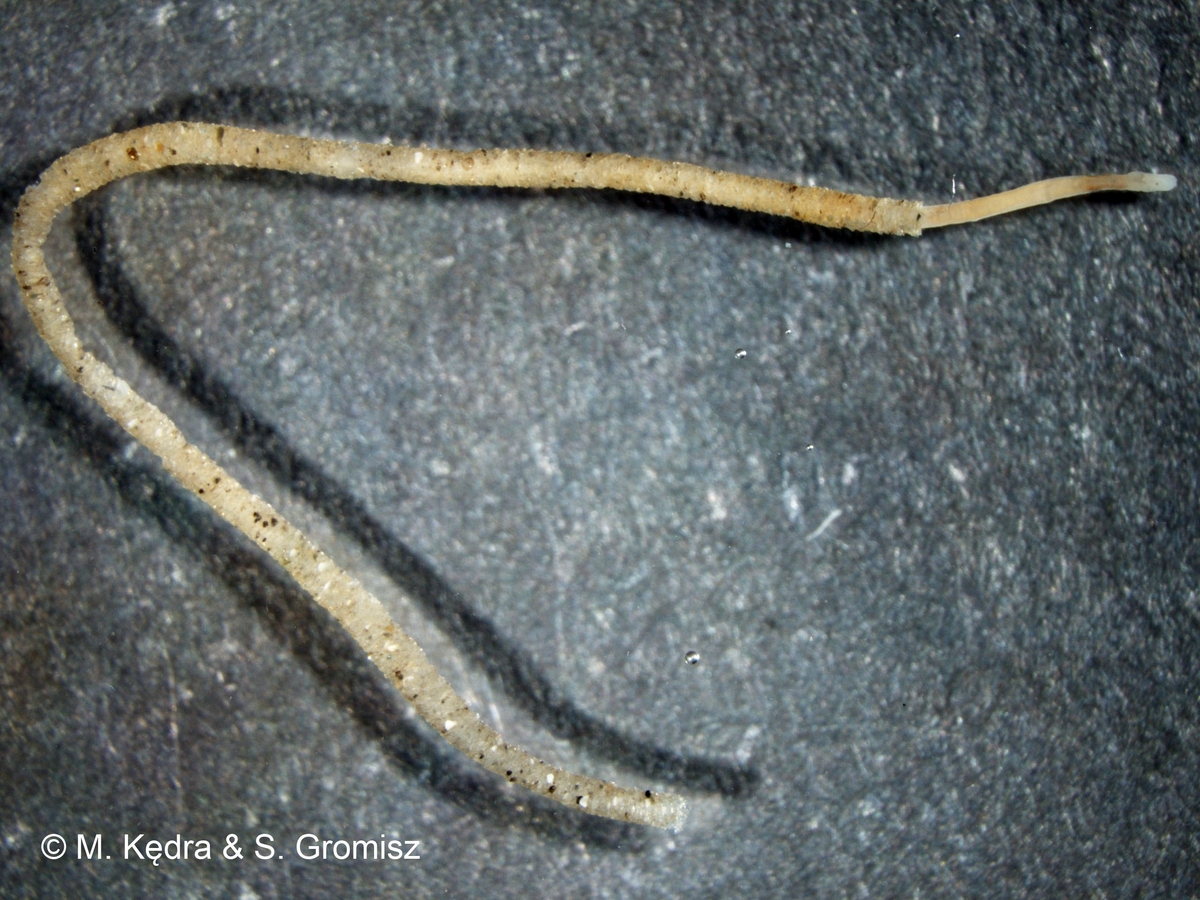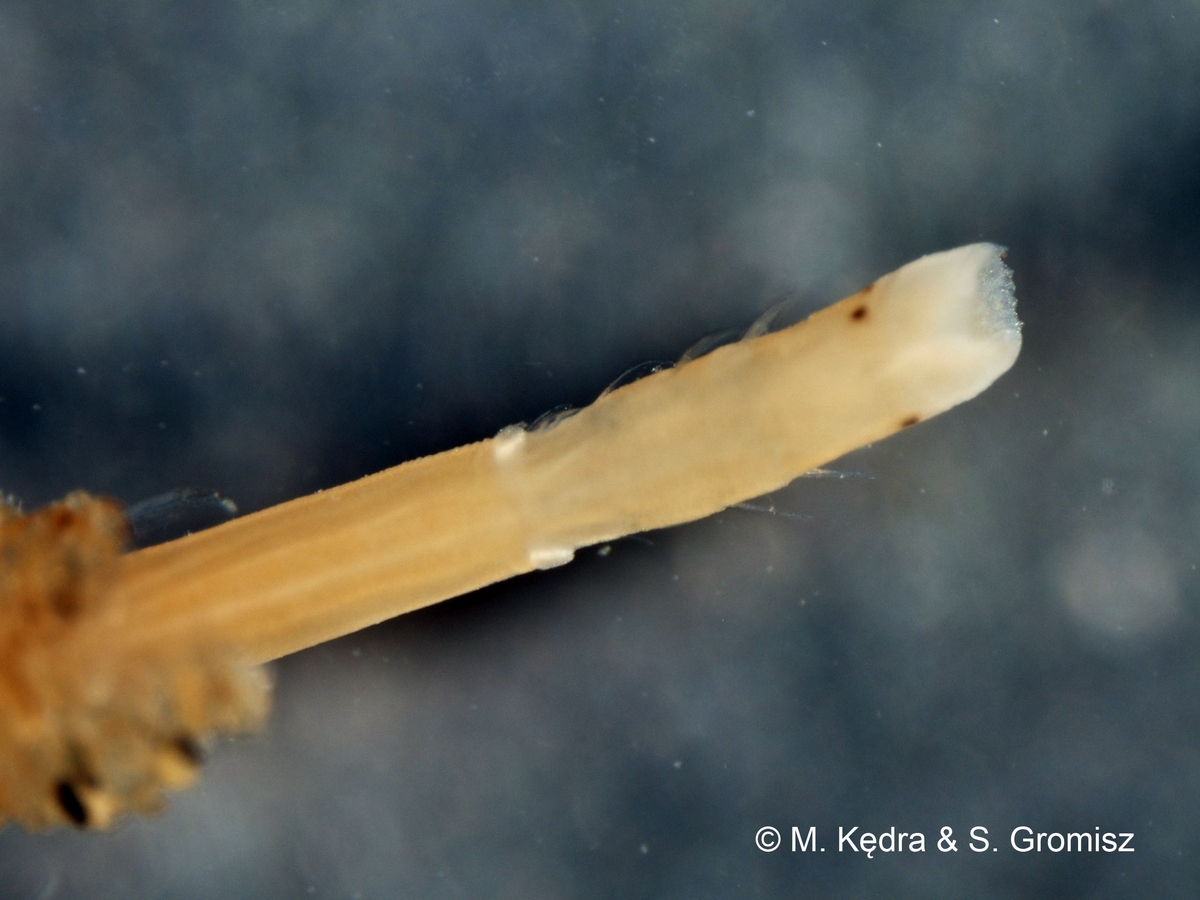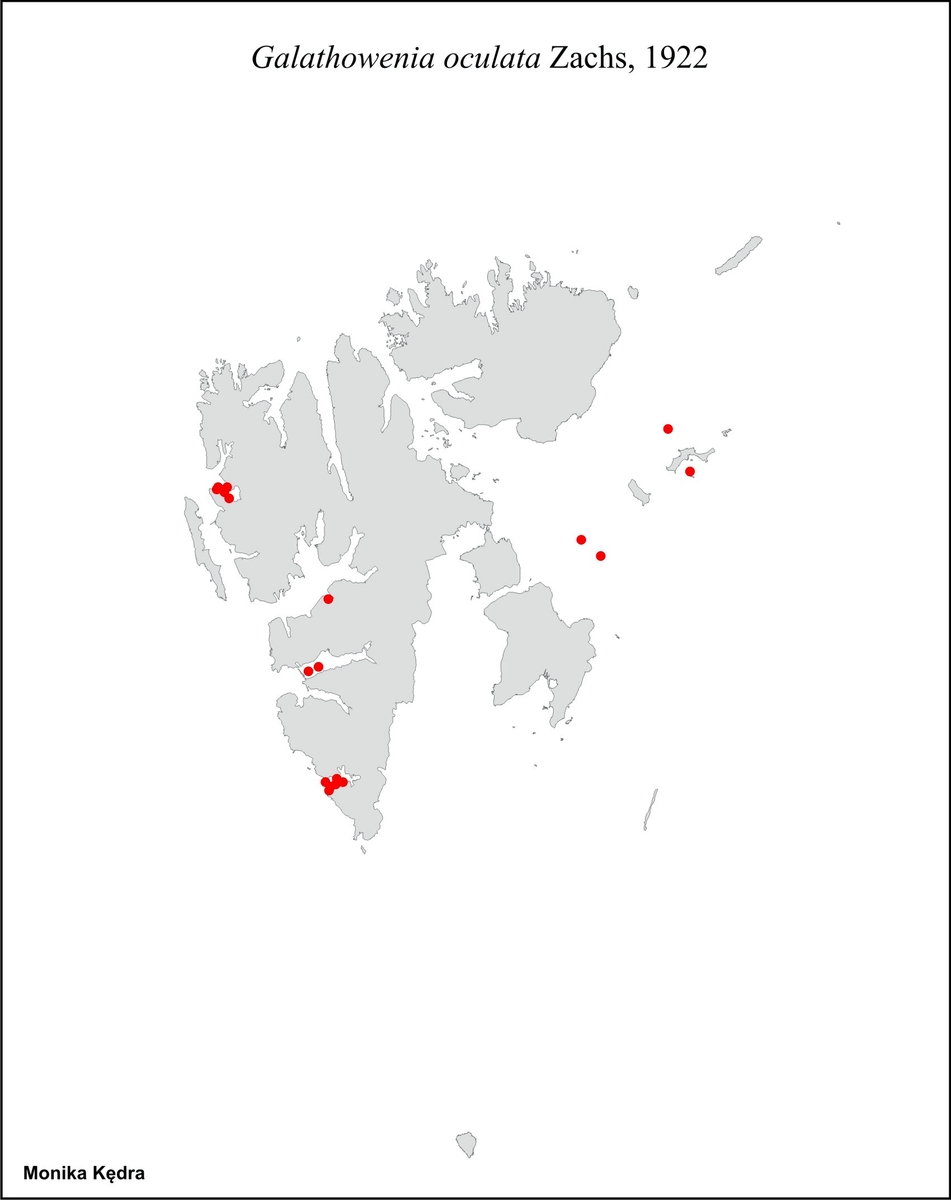Galathowenia oculata (Zachs, 1923)

|

|

|
Myriochele oculata Zachs,1922
Clymenia tenuissima Örsted,1844
Galathowenia africana Kirkegaard,1959
Myriochele annenkovae Hartman, 1960
Myriochele pacifica Annenkova, 1937
Distinguishing characteristics
Head region long with a high collar, usually with ventrolateral eye-spots.
Tube very long, thin encrusted with firmly cemented oblong sand grains, often in shifting light and dark colours in a characteristic transverse pattern.
Species description
Body long and cylindrical. Head region long with a high collar. Ventrolateral eye-spots and a dorsal pigmented band present in some populations but absent in others. Thorax with 3 chaetigers. Abdominal segments 21-31. Notopodia in all segments with only spinous capillary chaetae. Posterior notopodia with few but very long chaetae. Tori of anterior part of abdomen long and broad, those of posterior part short and broad. Uncini with 2 teeth side by side, but markedly asymmetrically placed. Pygidium with a pair of distinct lateral lobes. Tube very long, thin and cylindrical, with a thin secreted layer encrusted with firmly cemented oblong sand grains, often in shifting light and dark colours in a characteristic transverse pattern.
Size
Up to 30 mm long and 0.6 mm wide. Tube up to 90 mm long and 1 mm wide.
Color
Alive yellowish or reddish. Some populations with a dark pigment band over the prostomium.
In alcohol brownish or pale yellow.
Habitat
In soft sediments, sublittoral to 2800 m.
Mobility
Feeding
Surface deposit feeder, interface grazer.
Facultative suspension feeder.
Life cycle
Distribution
North Sea to Öresund, Arctic, North Pacific, North Atlantic.

